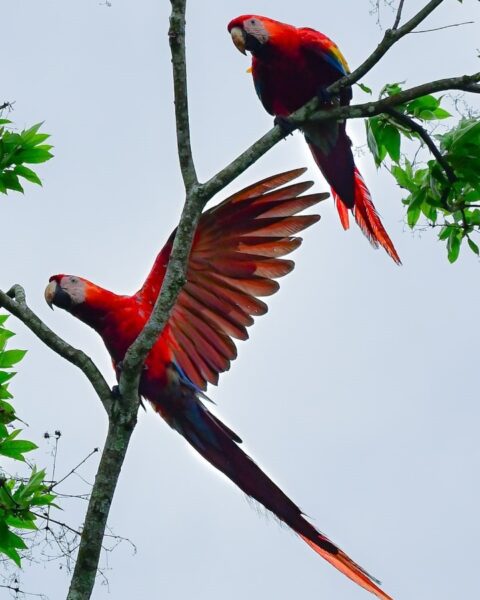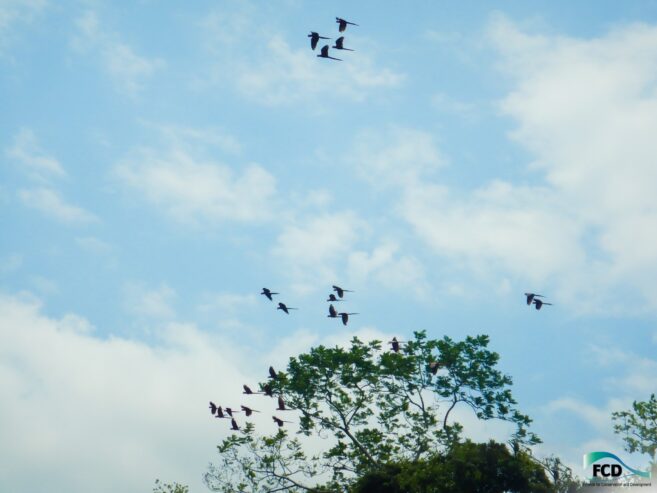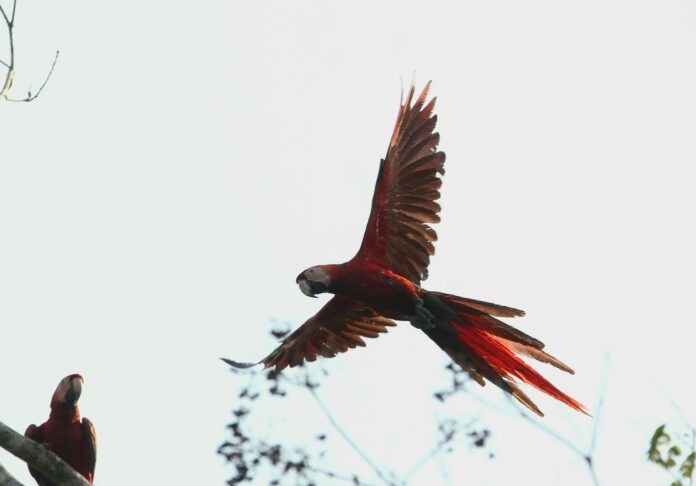The Frіеndѕ fоr Соnѕеrvаtіоn аnd Dеvеlорmеnt (FСD) are alerting Belizeans that the local population of Scarlet Macaws is іn іmmеdіаtе реrіl. The organization that looks after the Chiquibul National Park in western Belize released an official note on April 23rd explaining the current situation and citing that around 2008, approximately 125 pairs of macaws remained in that area.
At the time, FCD noted that the significant challenge for the species’ survival was constructing a hydroelectric dam within a primary breeding habitat. The area contained Quam-wood trees, where the macaws build their cavities and nests. The threat now is the illegal wildlife trade that runs rampant across the border.
The FCD notes that the scarlet macaw, also known as Ara macao cyanoptera, is endangered in Belize and other indigenous ranges. This report, despite the International Union for Conservation of Nature classifying the species as “least concern,” the FCD said it is evident that the scarlet macaw is suffering a substantial decline throughout its range. The viability of the populations is threatened by habitat fragmentation in settled and developing areas, low fecundity (the ability to produce an abundance of offspring), and poaching of chicks for opportunistic income.
The guardians of the Chiquibul, FCD, explained that in Belize, the concentration of sightings at various locations along the riparian areas of the Chiquibul Forest reflects the availability of food during the dry season until the end of May, when post-breeding flocking takes place. Nationally, the scarlet macaw’s local range is restricted to the Chiquibul/Maya Mountain Massif, with an estimated population of 300-350 individuals. However, in the Chiquibul region, these birds are targeted by poachers for the illegal wildlife trade.
To tackle this threat, the FCD undertakes a biomonitoring and citizen science program every year for an extended 7-month period, coupled with binational efforts, enforcement, and education. Once the breeding season is over, these will fly to the Eastern Maya Mountains, searching for feeding grounds. Areas such as Red Bank in the Stann Creek District are popular to observe wild macaws. However, in these areas, macaws risk losing their habitat, which is against the interests of farming and human settlements.
A Scarlet Macaw Working Group was launched in March 2024 in Red Bank to address the challenges related to protecting them. The group includes the Forest Department, National Biodiversity Office, and community leaders. Additionally, a binational task force has been activated in the western Cayo District to combat illegal wildlife trafficking. Last year, the Ministry of Tourism brought together various stakeholders to identify potential challenges tourism ventures may pose in the Chiquibul/Mountain Pine Ridge/Caracol Complex if not appropriately regulated.
The Scarlet Macaw is an endangered species in Belize, and its future is still uncertain. A long-term conservation strategy is necessary for its survival. Moreover, developing a paved road to the Caracol Archaeological Reserve in the western mountain range may increase visitation and access to previously secluded areas in the Maya Mountains, creating new challenges for conservation efforts.

Share
Read more

